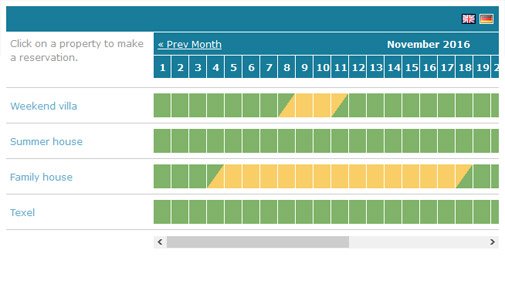Build A Newsletter System With Php And Mysql Download

Jason Lengstorf runs, a freelance design and development effort. He has a fetish for building custom applications from scratch, including his own content management system. When he's not glued to his keyboard, he's likely to be wearing cowboy shirts, deadlifting, or pretending to know stuff about wine. Important Note This code is written for demonstration purposes only. Several security holes have been pointed out in the comments, which I have addressed in Part Two of this tutorial series Editor's note: There is no part two of this series anymore.
Driver Xerox Workcentre M123 Windows 8 64 Bits here. Jason recommends his book as a resource for best practices. Still, I would strongly advise not using it for production websites without further testing. I have covered some of the bases with security, but other issues may exist. Further reading on security risks and safe PHP code can be found. Please read through this before implementing this code on your server to avoid potential security holes. Great tutorial! There are a few things that I feel should be pointed out/considered when using OOPHP.
Classes only make your code better when used correctly. This class isn’t that much more useful than if it were done in procedural code. Basically it’s too broad. Normally you’d break all that functionality into multiple classes and utilize them in a CMS class. Class DB_MYSQL (functions for CRUD actions against a mysql db) class DBConnect (functions for connecting to a database – should be a singleton pattern) class Template (functions for displaying the form) class ValidateData (functions for filtering/validating user input) Thanks for the great write up!
The Magic of PHP + MySQL It's safe to say that nearly every website that's up-to-date these days is using some form of content management system (CMS).
You’re right, a framework. That’s a really great idea. I mean, it’s only about 1MB for a PHP framework, and this page being so short, is like only 4kb. Why on Earth would you want to save on BW and HDD space? Also, why would you ever want to learn WHY stuff works.
Because you know, the people who write CMS tools and frameworks were just born with CMS tools and frameworks already made. Thanks Jason Lengstorf, this tutorial was great because it only did the bare minimum and I have read through a few books and they always do tutorials on how to make a CMS, but they are always way drawn out and confusing for a beginner. Personally I use WP and SilverStripe, but this was an excellent example on how to interact with DBs. I also agree, however, that it’s probably not a terrible idea to use the existing frameworks out there. A real-world CMS is incredibly complicated, and, like hatesflats said, they can become sprawling nightmares for maintenance. Having a grip on PHP and MySQL and the way a CMS works, however, will give you a great advantage when working with a platform like WordPress, or if you need to create a small site or widget that would benefit from a database.
To everyone else, thanks so much for all the positive feedback! Download Game Pes 2014 Untuk Hp Nokia Asha 308 there. And, of course, a HUGE thanks to Chris for running this tutorial.
I’ll be taking some of the suggestions from the comments and writing tutorials to follow, so if you don’t mind, check my site or follow me on Twitter () to see those tuts in the future. Thanks again! Not trying to beat a dead horse here, but isn’t this a good example of a reason to use a framework? The advantage here is that some very, very smart people (smarter than you or I) have thought about the hundreds of ways someone can hack your site. By using a framework, you can take advantage of those great minds. I know this is a very simple example, but you were hacked in a few minutes.
The CMS example is very nice and well written and a great intro to PHP, but if one is to continue on this path they will soon have to deal with session management, sql injection, XSF, session fixation, and on and on. Wouldn’t it be nice to let a framework deal with that and you deal with adding functionality and good design? Let’s face it, WordPress, Drupal, and other blogs are frameworks.
No one is complaining about their bloat. So all you code studs: instead of just injecting some off-hand comment on how you don’t like framework bloat, or that you will never learn to program by using a framework, give people some accurate information and let them learn. That being said, if you liked this tutorial, you should check out and see how it compares to the direct coding method. Great job Jason Lengstorf! I think this article is very well done and will prove to be a great help to many ambitious web heads! I was commissioned to build a custom web app for a client recently (Dec.
I knew I was going to have to work with some kind of CMS framework and create, read, update, and delete a lot of data that the CMS framework couldn’t do; due to the custom nature of the project. So I spent a week going through a very nice tutorial over at lynda.com (no plug intended) on how to build a CMS with PHP and MYSQL. Now I have a better understanding for how PHP/MYSQL/CMS work and was able to write some of my first functions with ease.